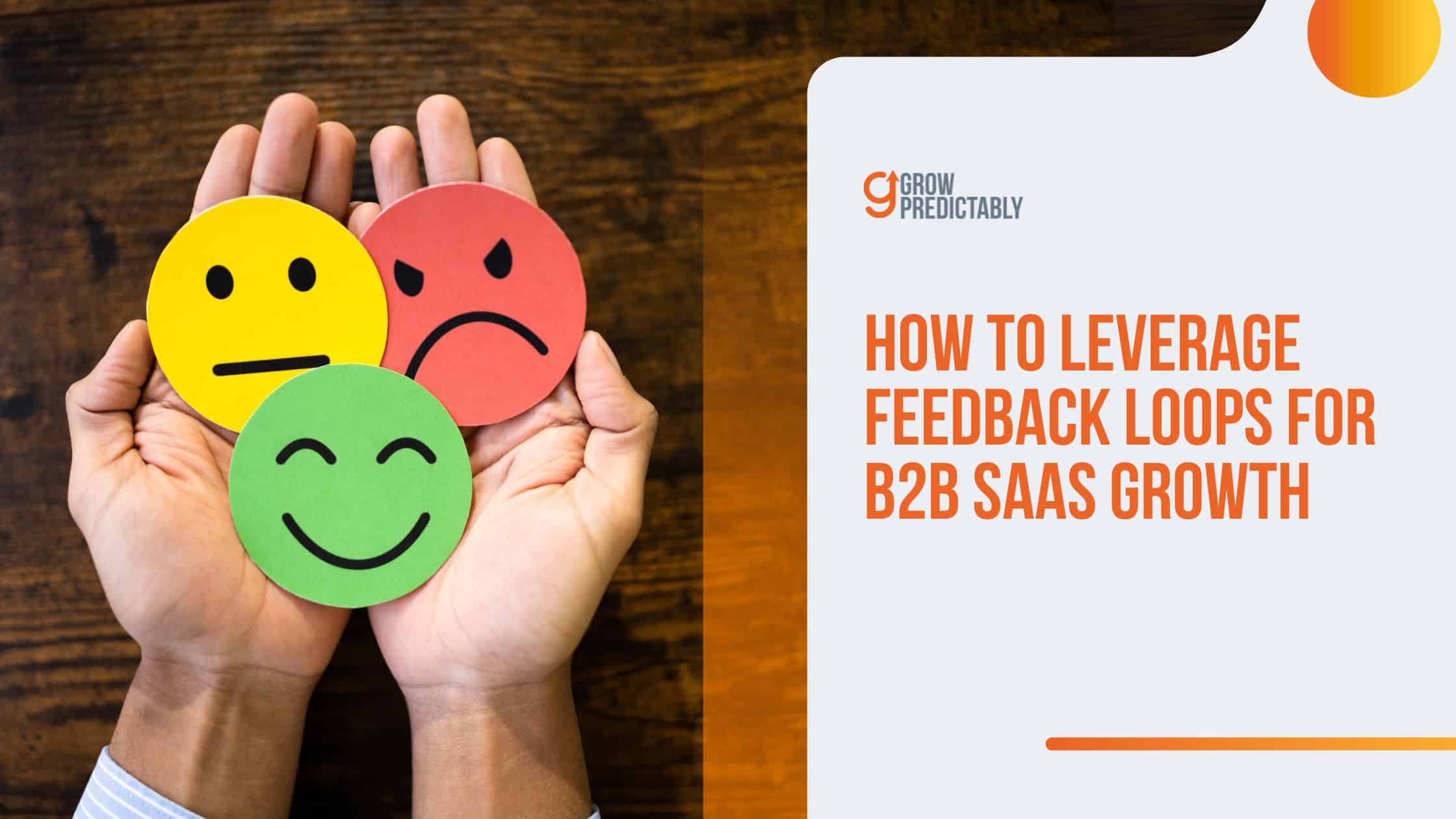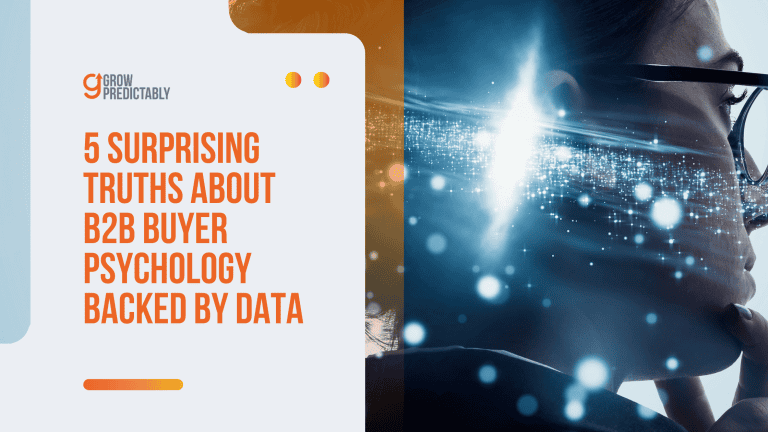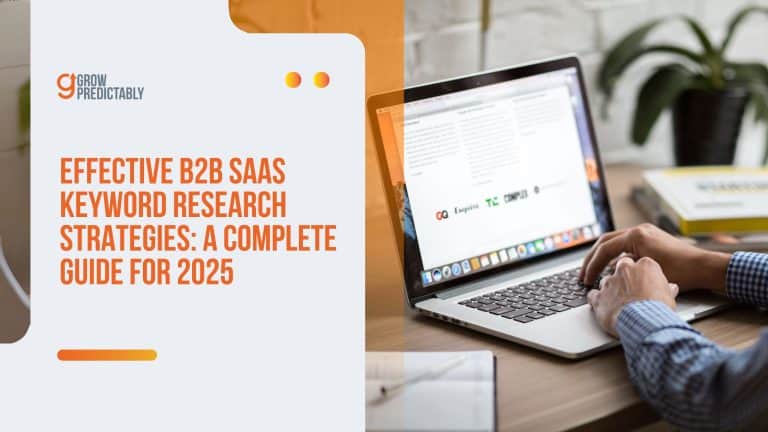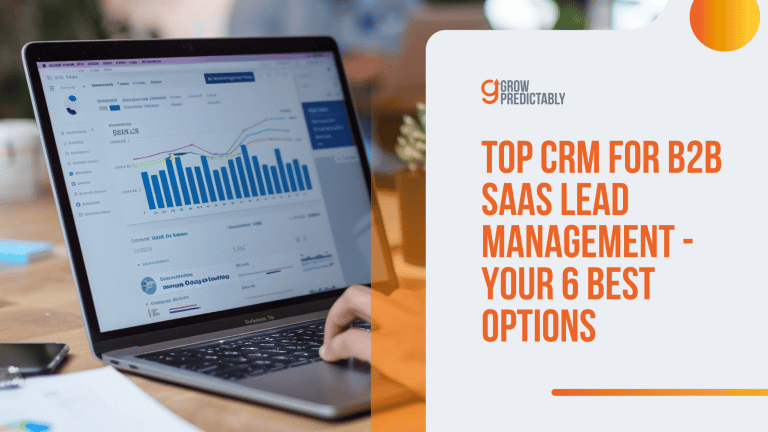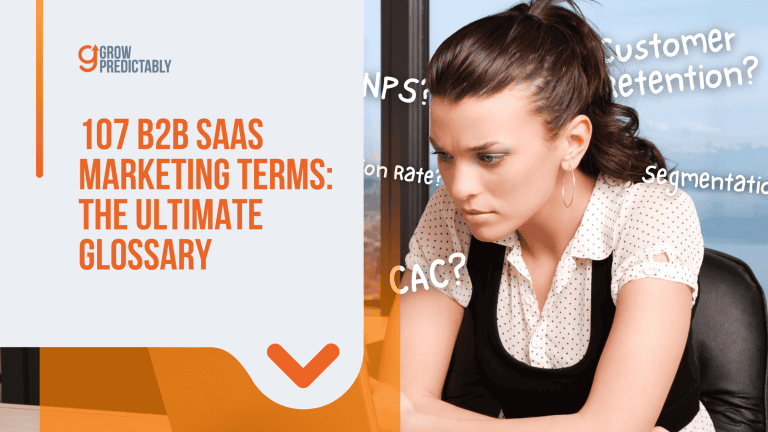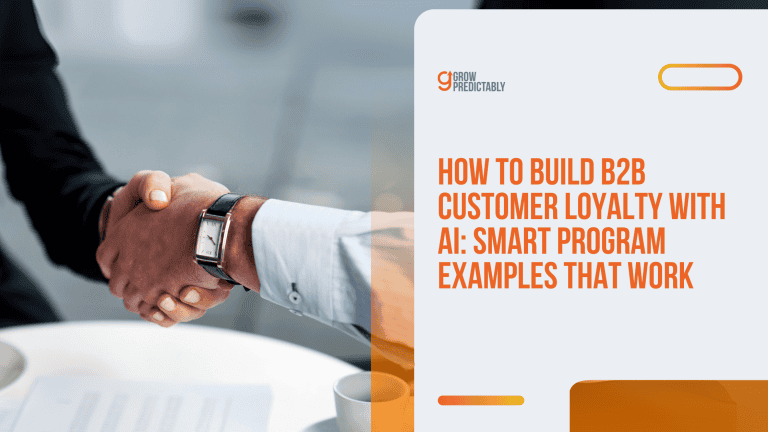How to Leverage Feedback Loops for B2B SaaS Growth
What if the fastest way to grow your SaaS product wasn’t adding more features but listening harder to the right feedback?
HubSpot scaled from $255M to $1.3B in three years by dedicating 20% of product team time to customer conversations.
Skipping this step leads to churn, wasted development efforts, and features that collect dust.
But with a structured feedback loop, you can make smarter product bets—before customers leave for a competitor.
Let’s walk through the playbook used by the best in B2B SaaS.
I. Why Customer Feedback is Crucial
Here’s the deal: if you’re running a B2B SaaS company and ignoring the need to collect customer feedback, you’re basically guessing what your customers want.
“Your most unhappy customers are your greatest source of learning.“
Bill Gates
Successful companies use feedback as their guide, and plenty of evidence proves its importance.
Listening closely to your users can be transformative for your business.
Case Study: Slack
Let’s talk about Slack. They didn’t just become a tool used by millions overnight.
Their incredible growth to over 8 million daily active users results from prioritizing customer feedback.
Stewart Butterfield, Slack’s CEO, personally reviews every piece of feedback, showing real dedication.
This commitment has helped them tailor their services precisely to user needs, enhancing their reputation and growth.
Identifying Issues Early
Paying attention to feedback allows you to spot issues before they become customer deal-breakers.
Regularly scheduling meetings to analyze feedback from various channels helps make data-informed decisions and identify potential problems early.
According to Intercom, 67% of customers leave because of issues they feel weren’t addressed.
By catching these early, you safeguard your customer base and your bottom line.
- Prevent customer churn: Addressing problems early keeps customers satisfied.
- Enhance user experience: Constantly improve based on real user input.
- Financial impact: Protects and possibly increases revenue by retaining customers.
Building Desired Features
Gathering customer feedback is your roadmap to creating features people actually want.
HubSpot’s approach, where their product team dedicates 20% of their time to customer interaction, helped them escalate their revenue from $255 million to $1.3 billion between 2018 and 2021, as noted in their financial disclosures.
- Focused development: Build what users need, not what you assume they want.
- Increase customer satisfaction: Meeting actual demands boosts loyalty and usage.
- Revenue growth: Features based on feedback can significantly contribute to revenue expansion.
Avoiding Unwanted Features
Collecting feedback also prevents you from wasting resources on features that miss the mark.
Dropbox leveraged feedback to recognize that users wanted improved sharing controls, not more upload options.
As a result, they shifted focus, leading to a 25% rise in team plan upgrades.
- Efficient use of resources: Focus development efforts where they’re most impactful.
- User alignment: Ensure product changes align with user needs.
- Competitive advantage: Stay ahead by being directly responsive to user demands.
The Reality Check
Let’s cut to the chase: no product is perfect.
Yours, mine, everyone’s can improve. The real insight comes from listening to users who know best and providing constructive feedback.
This understanding transforms products and services, leading to refined, user-focused solutions.
Consequences of Ignoring Feedback
Ignoring feedback can have serious downsides.
You end up with features no one uses, face higher churn rates, and competitors who listen may quickly surpass you.
Embracing feedback helps ensure your product remains relevant and competitive.
II. Understanding Feedback Loops for B2B SaaS Product Growth
Let’s dive into feedback loops—they’re like the navigational system for your SaaS business.
Imagine having a clear destination in mind; without a reliable GPS, you may never get there efficiently.
“I think it’s very important to have a feedback loop, where you’re constantly thinking about what you’ve done and how you could be doing it better.“
Elon Musk
Feedback loops deliver constant updates, telling you if you’re on the right road or if you need to change course.
Customer feedback loops are essential mechanisms for ensuring your strategy aligns with customer expectations.
What is a Feedback Loop?
At its core, an effective customer feedback loop involves gathering information from customers, implementing changes, and assessing the impact.
This cycle is continuous and vital.

Companies like Slack understood the power of feedback loops early on.
When they recognized that teams faced challenges with file sharing, they enhanced their file search capabilities.
As a result, their usage spiked by 35% in the following quarter.
Why Feedback Loops Matter for Growth
They Stop Guessing Games
Feedback loops eliminate the guesswork from product development.
By relying on real customer insights, you make informed decisions.
HubSpot, for instance, conducts weekly customer interviews to guide its product roadmap, leading to an 18% boost in customer retention.
This approach ensures that you’re catering to actual needs rather than assumptions.
- Informed decisions: Rely on real data, not guesswork.
- Higher retention: Meet actual customer needs and increase satisfaction.
- Strategic roadmap: Develop products that align precisely with user demands.
They Catch Problems Early
Analyzing feedback is a hallmark of effective feedback loops.
Dropbox learned through feedback that business users were hitting storage limits, prompting them to launch Dropbox Business before users left for competitors.
This proactive approach prevented customer churn and maintained their market position.
- Problem prevention: Identify and address issues before they escalate.
- User-centric solutions: Tailor offerings directly to user challenges.
- Market retention: Retain customers with timely and relevant solutions.
They Help Find Gold Mines
Leverage customer feedback to uncover opportunities for significant growth.
Zendesk discovered a demand for better reporting tools via their feedback program.
Adding advanced analytics doubled their enterprise sales, showcasing how listening to customers can unearth profitable initiatives.
- Opportunity discovery: Identify new areas for growth and innovation.
- Enhanced offerings: Deliver features that add real value.
- Increased sales: Align product improvements with customer desire to drive revenue.
The Growth Scorecard
The Growth Scorecard is a dynamic tool used to track and measure performance across different stages of the customer journey.
- Acquisition feedback: Understand how customers find you.
- Activation feedback: Improve the first user experience.
- Revenue feedback: Learn why people choose to pay.
- Retention feedback: Discover why users stay over time.
- Referral feedback: Figure out why customers recommend you to others.
Focusing on actionable metrics helps businesses identify bottlenecks and optimize their strategies for improved growth.
It stands out with features like weekly tracking, a color-coded system for quick status assessment, and a flexible, adaptable framework for real-time data insights.
Mixing Feedback Types
Diversifying your feedback methods yields a comprehensive understanding of customer behavior and sentiment:
- Numbers: Leverage usage statistics and satisfaction scores.
- Words: Conduct customer interviews and analyze support tickets to gather qualitative feedback.
- Behavior: Observe how users interact with your product in real time.
Closing the Feedback Loop
The true power of feedback loops lies in closing them by taking concrete action.
This means not merely collecting data but actively implementing changes based on it.
Asana hosts a “Customer Voice” meeting every two weeks, where they review feedback and assign responsibility for addressing issues.
This ensures that feedback translates into tangible improvements, fostering continuous growth.
By understanding and implementing feedback loops effectively, your SaaS company not only responds to user needs but also thrives by evolving in step with them.
III. Steps to Create a Feedback Loop
Developing a robust feedback loop is essential for any B2B SaaS company aiming for consistent growth and improved customer satisfaction.
The process can be streamlined into a series of practical steps that ensure you are effectively gathering, analyzing, and acting on customer feedback.
1. Identify Goals & Success Metrics
Start by clarifying the goals and metrics defining your feedback system’s success.
This isn’t just about choosing random figures; it means focusing on actionable metrics that really indicate how well your product meets customer needs.
Use your Growth Scorecard to keep track of these key metrics.
- Customer churn rate: Strive to keep this below 5% monthly. Reducing churn is crucial as acquiring a new customer can be five times as expensive as retaining an existing one (Harvard Business Review).
- Net Promoter Score (NPS): Aim for a score of 50 or higher. A high NPS indicates that customers are not only satisfied but also likely to recommend your product.
- Feature adoption rate: Target at least 30% adoption for new features, ensuring they add value.
- Time to first value: The quicker a customer experiences value, the better.
- Support ticket volume trends: Monitor for increases or decreases that signify changes in user satisfaction.
- Customer engagement score: Track how actively users engage with your platform.
Focusing on a limited set of metrics, typically 3-4 that align with your stage of growth, can offer more profound insights than overwhelming yourself with data.
2. The Red-Yellow-Green System

Employing a simple traffic-light system can prioritize your actions based on urgency and performance.
This straightforward method can streamline your focus and action.
- Red: Urgent issues needing immediate attention, such as a churn rate rising above 8%.
- Yellow: Metrics to monitor carefully, like a subtle decline in engagement that might indicate upcoming issues.
- Green: Metrics performing well, such as a rising NPS, indicating current strategies are effective.
3. Avoid Vanity Metrics
Vanity metrics like total users or site visits can be misleading.
They might look impressive but often don’t provide actionable insights into customer satisfaction or product usage.
Instead, hone in on metrics that show if customers are gaining actual value from your offerings.
This approach not only refines your strategy but aligns it more closely with genuine customer needs.
- Align Metrics with Business Goals: Choose metrics that reflect your specific growth objectives.
- Evaluate Which Metrics Drive Action: Identify metrics that lead to meaningful business decisions.
- Prioritize Customer Success Indicators: Focus on satisfaction, retention, and value delivery.
- Regularly Review and Adjust: Stay flexible by reassessing your metrics as business needs evolve.
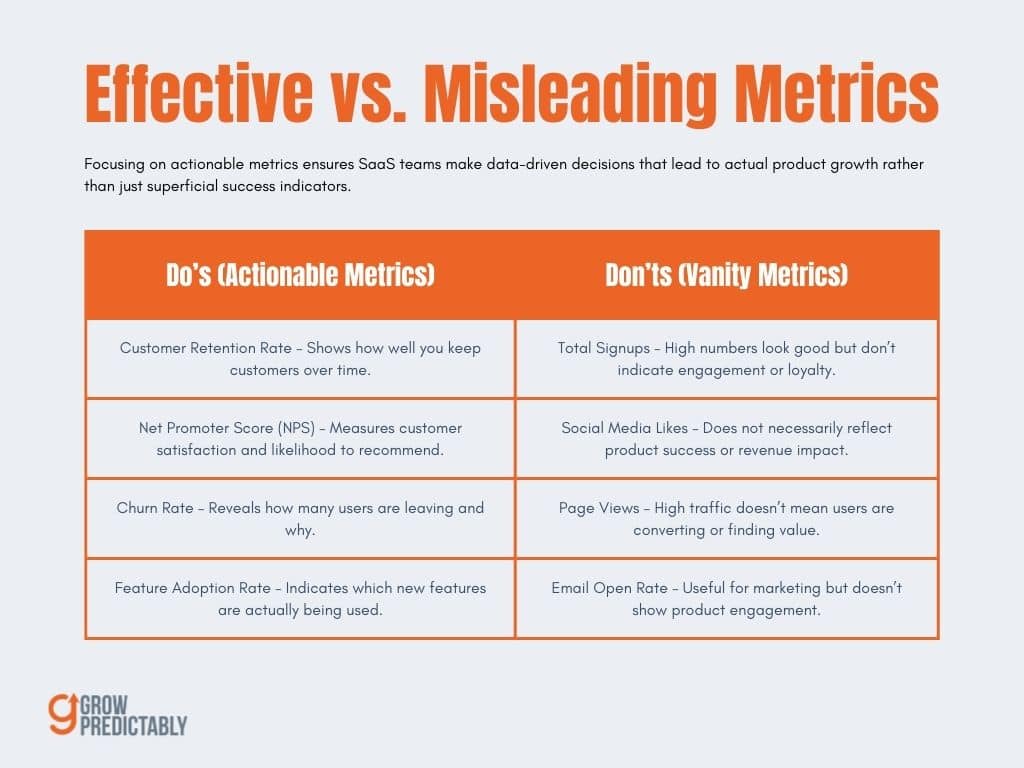
Conduct quarterly reviews of your set goals and metrics.
This will help you adjust to evolving customer needs and market conditions.
Flexible adjustments based on these reviews can ensure your strategies remain relevant and practical.
4. Select Optimal Channels and Tools
Choosing the right channels and tools for feedback collection is crucial for gathering meaningful insights.
Here’s a look at some popular tools:
In-App Surveys
- Qualaroo ($29-299/mo): Great for gathering contextual feedback.
- Typeform ($25-83/mo): Provides an engaging survey experience.
- SurveyMonkey ($25-75/mo): Reliable for broad feedback collection.
Support & Chat Tools
- Intercom ($59-999/mo): Enables real-time customer support interactions.
- Zendesk ($49-99/agent/mo): Useful for ticket management and trend analysis.
- Help Scout ($20/user/mo): Ideal for smaller teams requiring a straightforward setup.
Call Recording & Analysis
- Gong ($100-200/user/mo): Analyzes sales calls for patterns.
- Chorus ($95-150/user/mo): Tracks detailed customer conversations.
Starting with a basic setup and scaling up as necessary is often the most effective approach.
This ensures that solutions grow in tandem with company needs and customer size.
5. Gather and Segment Feedback
Feedback isn’t uniform; it varies based on the customer’s journey stage.
Collecting customer feedback is crucial to tailoring your feedback methods to different segments for more effective insights.
- New Sign-Ups: Understand their first impressions and initial setup experiences.
- Customers in Their First 30 Days: Concentrate on onboarding effectiveness.
- Active Customers (3+ Months): Integrate product usage into workflow inquiries.
- Long-Term Customers (1+ Year): Seek feedback on ROI and longer-term needs.
Segmenting feedback based on these groups ensures questions are relevant and the insights gathered are actionable.
This strategy can reveal specific challenges and opportunities within different user groups.
6. Analyze Data for Actionable Insights
Once feedback is collected, organize it into meaningful categories as aligned with your Growth Scorecard to gather valuable insights:
- Product features & bugs: Understand technical hurdles.
- Customer support experience: Identify service gaps.
- Pricing concerns and feature requests: Adjust offerings based on user feedback.
Use accessible tools like Excel or Google Sheets for simple tracking, and consider platforms like Airtable as more data accumulates.
Visual tools and simple dashboards can then highlight trends and actionable insights.
7. Implement Actionable Product & Service Enhancements
Transform insights into concrete product and service improvements.
Effective B2B SaaS companies often follow these steps:
- Sort Feedback into Buckets: Prioritize using the red-yellow-green system.
- Map Each Change to Business Impact: Understand how changes can reduce support needs or enhance retention.
- Align Changes with User Expectations: Implement feedback loops to gather user insights through tools like surveys, ensuring products meet customer needs.
- Create Mini-Tests Before Full Rollout: Test initial versions with a select user group.
By methodically prioritizing feedback, companies can ensure the most critical issues receive attention first, fostering customer satisfaction and retention.
8. Monitor and Measure Success
Evaluation post-implementation is essential to verify the effectiveness of changes.
Set up before/after comparisons for a thorough analysis.
- Set Up Before/After Measurements: Review key statistics like customer engagement and support ticket reductions.
- Re-Survey Your Customers: Direct customer feedback on changes can validate or refocus your efforts. Pay special attention to negative feedback, as it provides actionable insights by highlighting user dissatisfaction and areas that need enhancement.
- Watch Core Metrics: Track recurring revenue, customer lifetime value, and feature adoption rates to assess business health.
Consistent monitoring and adjustments, informed by solid data, allow companies to refine their approach continually and improve customer satisfaction.
This proactive stance ensures that feedback-driven strategies make meaningful contributions to business growth.
IV. 5 Effective Feedback Loop Strategies for B2B SaaS
“Feedback is the breakfast of champions.“
Ken Blanchard
Imagine turning customer feedback from a dusty old inbox nobody checks into a goldmine of opportunities!
If you’re in the B2B SaaS game, these feedback loop strategies are your trusty map to find gems like better user experience, cooler product features, and happier, loyal customers.
1. AI-Powered In-App Feedback & Proactive Support
Incorporating AI into your feedback systems enables real-time, personalized user support and feedback collection.
This approach uses the power of AI to monitor user behavior and provide timely guidance, reducing frustration and improving user experience.
- Real-Time Feedback Collection: Utilize AI tools like Mixpanel or Pendo to analyze user interactions in real-time, identifying usage patterns and potential obstacles. These insights help streamline the user experience by providing immediate feedback.
- Automated Assistance and Support: Implement chatbots or AI-driven tooltips using platforms like Intercom or Drift. These tools can detect when a user is struggling and offer timely advice or redirect users to helpful resources.
↳ Example: If users frequently abandon a task after multiple attempts, an AI assistant could engage them with a short tutorial, enhancing their understanding and ability to perform the task independently.
AI’s ability to personalize interventions based on user behavior can substantially improve user satisfaction rates.
According to Forbes, companies using AI for personalized experiences report a 10% increase in customer satisfaction scores.
2. Customer Health Scoring & Predictive Insights
Developing a customer health score enables companies to proactively manage churn risks and strengthen customer relationships.
You can forecast engagement and intervene where necessary by combining product usage data, support tickets, and sentiment analysis.
- Comprehensive Health Score Metrics: Employ tools like Gainsight or Totango to integrate various data points such as usage frequency, support queries, and sentiment analysis to create a holistic view of customer health.
- Automated Alerts for Proactive Engagement: Set up systems where any detected drop in a customer’s health score triggers an immediate response, such as personal outreach by a Customer Success Manager or targeted email campaigns.
↳ Example: If a previously active customer stops using certain features, a proactive approach could include personalized support to re-engage them and offer bespoke solutions.
Using predictive insights allows companies to address potential issues before they escalate.
Research by Harvard Business Review indicates that predictive analytics can reduce churn by nearly 15%.
3. 360° Feedback from Multiple Stakeholders
Gathering comprehensive feedback from every stakeholder within a client company—from end-users to decision-makers—provides a well-rounded understanding of your product’s impact and areas for improvement.
This layered approach helps ensure product enhancements align with diverse user needs and business goals.
- Holistic Data Collection: Utilize tools like SurveyMonkey or Qualtrics to gather feedback from different personas within client organizations, capturing perspectives from decision-makers, IT teams, and frontline end-users. Conducting user interviews can further enhance this process by directly engaging with customers to gather insightful feedback, revealing user preferences, and informing product developments.
- Data Cross-Referencing for Holistic Insights: Use analytics platforms like Tableau to correlate feedback from various sources, leading to richer, more actionable insights.
↳ Example: A SaaS tool used by multiple departments might analyze input from CMOs, who focus on strategic value, and everyday users, who discuss day-to-day usability and feature requests.
Integrating multiple perspectives ensures that product developments are balanced and holistic.
According to Gartner, companies that utilize comprehensive stakeholder feedback increase product success rates by up to 30%.
4. Closed-Loop Feedback System for Continuous Improvement
A closed-loop feedback system ensures that collected customer feedback is not only acted upon but also transparently communicated back to users.
This system builds trust and engagement by showing customers that their input directly influences product development.
- User-Visible Feedback Portals: Implement platforms like Aha! or UserVoice where customers can submit suggestions and track their statuses, fostering a community-centered approach to product development.
- Regular Updates on Feedback Implementation: Maintain a public product roadmap where users can vote on new features and receive updates on the progress of their suggestions, encouraging active participation and demonstrating commitment to customer-driven improvements.
↳ Example: A feedback portal that notifies users when their suggested features are implemented demonstrates responsiveness, boosting customer satisfaction and retention.
Effective communication in closed-loop systems is pivotal.
A Zendesk study found that companies communicating effectively with customers through feedback loops see a 20% increase in user retention.
5. Gamified User Engagement & Feedback Collection
Utilizing gamification to encourage feedback enhances user engagement by making the process enjoyable and rewarding.
This strategy not only increases the volume of feedback but also boosts the quality by incentivizing detailed user responses.
- Incentives through Gamification Elements: Leverage platforms like Badgeville to integrate gamification into your feedback processes, offering points, badges, or rewards for engagement behaviors, such as completing surveys or participating in beta tests.
- Exclusive Offers to Active Contributors: Offer benefits such as early access to new features for users who actively provide detailed feedback, fostering a loyal group of engaged testers and advocates.
↳ Example: By granting beta testers special features or recognition, users are more likely to engage deeply with the platform and provide comprehensive feedback.
Gamification not only increases participation but also enriches the feedback received.
According to Tech Jury, businesses incorporating gamification see a 47% increase in engagement, demonstrating its effectiveness in encouraging user interaction.
V. FAQs
VI. Turning Voices into B2B SaaS Victory
A customer feedback loop is not just a tool—it’s your secret weapon for skyrocketing product growth and customer happiness.
Setting up a straightforward system for gathering and dissecting feedback fosters a culture where improvement and innovation are as natural as breathing.
This approach ensures that your products consistently meet and even exceed customer needs and expectations.
Embracing customer feedback doesn’t just help you keep pace with user demands; it turbocharges your business growth, turning satisfied customers into loyal fans and advocates.
So, dive in and let the feedback fuel your success!

